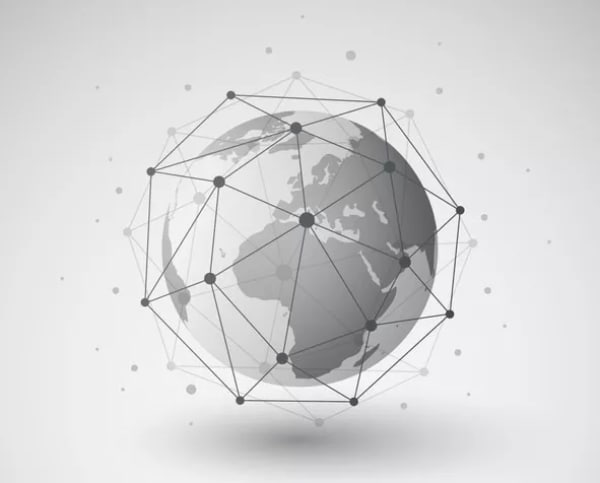|
The OP
Published on 2020-3-17 21:53
Only look at the author
This post is from RF/Wirelessly
Latest reply
Learned
Details
Published on 2020-3-26 16:18
| ||
|
|
||
|
alan000345
Currently offline
|
2
Published on 2020-3-26 16:18
Only look at the author
|
|
|
|
|
|
Visited sections |
- 【Posts】Smart connected lighting and the Internet of Things
- 【Posts】Does the Internet of Things mean the Internet of Everything?
- 【Posts】Smart tree-planting car based on Gizwits IoT platform
- 【Posts】【IoT Graduation Project】esp8266 module + Gizwits AIoT + smart socket design
- 【Posts】MicroPython Hands-on (28) - Yeelight for the Internet of Things
- 【Posts】Buy a 7-inch DWIN smart screen with Android system for 50 yuan
- 【Posts】MicroPython Hands-on (26) - OneNET of the Internet of Things
- 【Posts】MicroPython Hands-on (31) - Easy IoT
- 【Download】Xunzhun Technology is committed to providing IoT WiFi smart lighting solutions
- 【Download】Intelligent wireless control system for building lighting based on Internet of Things technology
- 【Download】Campus lighting wireless monitoring system based on Internet of Things technology.pdf
- 【Download】Lighting control system based on the Internet of Things—ARM client software design
- 【Download】\"Big Talk on the Internet of Things\" HD Bookmark Edition
- 【Download】Bluetooth 4.0 BLE Development Complete Manual: Practical IoT Development Technology
- 【Download】Japanese Illustrated Book Series: Illustrated Internet of Things
- 【Download】Industrial IoT (IIOT) - What opportunities are there for Silicon Valley?
- 【Design】[Internet of Things] Hongmeng Internet intelligently turns on the light +4269745A
- 【Design】[Training Camp] [Internet of Things Practical Combat] Multifunctional Lighting Calendar Album
- 【Design】Call for submissions | IoT smart feeder
- 【Design】# Fifth Lichuang Electronic Design Competition# Internet of Things intelligent learning development board based on ESP8266
- 【Design】[Training Camp_Advanced Class] Internet of Things Smart Socket
- 【Design】# Fifth Lichuang Electronic Design Competition #Internet of Things Intelligent Power Supply
- 【Circuits】How to Design a Smart Garbage Monitoring System Using IoT
- 【Circuits】Design of hydroponic farm based on IoT
- 【Circuits】Design of water management system based on Internet of Things
- 【Circuits】How to use M5Stamp PICO and Qubitro to build an IoT door lock monitoring system
- 【Circuits】Fully automatic multi-purpose intelligent lighting circuit design
- 【Circuits】Intelligent lighting control system application circuit design
- 【Articles】Qualcomm IoT Service Suite Launches to Accelerate Digital Transformation of Smart Connected Spaces
- 【Articles】LED intelligent lighting control system based on IOT
- 【Articles】IoT and LED may be the main direction of intelligent lighting
- 【Articles】The Ministry of Industry and Information Technology issued a "Notice" to promote the mobile Internet of Things from "Internet of Everything" to "Intelligent Internet of Everything"
- 【Articles】From "Internet +" to "Internet of Things ×", the development trend of IoT application market and full-chain wireless modules
- 【Articles】MIIT releases guidelines for the use of radio frequencies for the Industrial Internet and the Internet of Things
-
Intelligence, sensing, the Internet of Everything, PI takes you into the era of the Internet of Things! Download the information to win gifts!
Intelligence,sensing,theInternetofEverything,PItakesyouintotheeraoftheInternetofThings!Downloadtheinformationtowinagift>>ClickheretoentertheeventEventtime:FromnowuntilSeptember20,2020Howtoparticipate:1.Entertheproductinformationareaofth ...
-
IoT sensors make everyday objects smart through awareness and cognition
LatencyofNB-IoTComparedtoLTE-M,NB-IoTislesssuitableforsituationswhereextremelylownetworklatencyisrequiredInthesecases,LTE-MismoresuitableThechoiceofcommunicationstandardisnottheonlyfactortoconsiderhere.Inadditiontothedifferencesinnetworklat ...
-
OPEN SCOFIELD WINTER WARDROBE
[img]https://wwwnet/images/2024/11/14/1f9dff95d3bc981f8img][img]https://wwwnet/images/2024/11/14/2a81ca07f0c52991bimg]
- Newbie Report Newbie Report
- How to use CAN communication to control the inverter?
- Share a domestic 32-bit M3 microcontroller CH32F103
- Those who work on weekends, please come and gather
- Dear electronic design experts, please come and have a look
- TMS320-F2818 DC resistance comparator
- Which transistor-controlled MOS tube switch circuit is better?
EEWorld Datasheet Technical Support
-
Qualcomm launches its first RISC-V architecture programmable connectivity module QCC74xM, supporting Wi-Fi 6 and other protocols
On November 14, Qualcomm announced the launch of two connectivity modules, QCC74xM and QCC730M, f
-
It is reported that memory manufacturers are considering using flux-free bonding for HBM4 to further reduce the gap between layers
On November 14, according to Korean media ETNews, Samsung Electronics, SK Hynix, and Micron are a
-
ON Semiconductor CEO Appears at Munich Electronica Show and Launches Treo Platform
During Electronica, ON Semiconductor CEO Hassane El-Khoury was interviewed by Power Electronics N
- AMD launches second-generation Versal Premium series: FPGA industry's first to support CXL 3.1 and PCIe Gen 6
- SEMI: Global silicon wafer shipment area increased by 6.8% year-on-year and 5.9% month-on-month in 2024Q3
- TSMC's 5nm and 3nm supply reaches "100% utilization" showing its dominance in the market
- LG Display successfully develops world's first stretchable display that can be expanded by 50%
- Seizing the Opportunities in the Chinese Application Market: NI's Challenges and Answers
- New diaphragm-free solid-state lithium battery technology is launched: the distance between the positive and negative electrodes is less than 0.000001 meters
- Photoresist giant JSR Korea EUV MOR photoresist production base started construction, expected to be put into production in 2026
- Problems with STM32 and passive buzzer playing sound
- Embedded Tutorial_DSP Technology_DSP Experiment Box Operation Tutorial: 2-28 Building a Lightweight WEB Server Experiment
- OPA847IDBVR op amp domestic replacement
- AG32VF407 Test UART
- [Digi-Key Follow Me Issue 2] Chapter 1: Sharing on receiving the goods
- What model is this infrared receiver? Which model can be used instead? Thank you
- Selling brand new unopened ZYNQ 7Z020 FPGA core board
- The LORA module used in the lithium battery-powered water meter setting can save energy when 100 water meters are installed in one corridor.
- I would like to ask, when a port is set to RX0, is it necessary to set the input and output direction of this port?
- Why is this year so difficult? It’s even more difficult than during the pandemic. I’m 30 and facing unemployment. I’m so confused.
- Ask about the voltage regulator test question
- [Xiaohua HC32F448 Review] About Xiaohua Semiconductor's UART interrupt sending and PRINTF construction and redirection
- 【BIGTREETECH PI development board】 HDMI output test
- 【BIGTREETECH PI development board】+08. Audio test (zmj)
- [Xiaohua HC32F448 Review] +RTC electronic clock
- # STM32H7S78-DK Development Kit Three-week Review: Implementation and Analysis of Simple Sound Collection and Storage Using SD Card Reading and Writing
- [STM32H7R/S] Review⑧ nano edge ai studio training a model--Part 1
- [2024 DigiKey Creative Competition] A "fortune-telling" artifact based on Raspberry Pi
- New energy vehicle on-board AC slow charging and maintenance
- Embedded Engineer AI Challenge Camp (Advanced): Deploy InsightFace algorithm on RV1106 for real-time face recognition of multiple people
- I want to make a self-driving car. I saw one on Bilibili that costs 300 yuan. I am hesitant.
- [K230 Embedded AI Development Board Review] + License Plate Recognition and Billing Management
- How to deploy LVGL free graphics library on low-cost ARM platform, based on Allwinner T113-i
- Please help me analyze the reasons why EMI fails.
- ChatTTS is really awesome!






 提升卡
提升卡 变色卡
变色卡 千斤顶
千斤顶